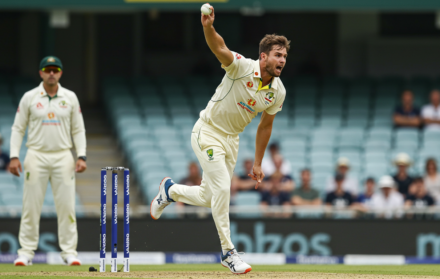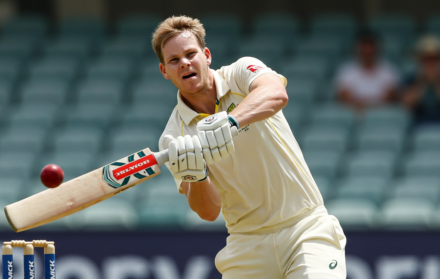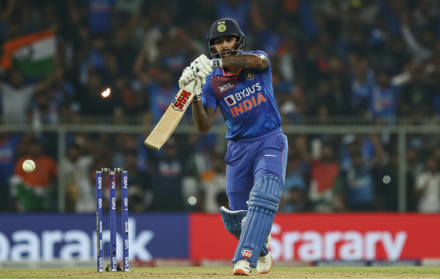
Womens Cricket and The Role of Academies and Training Programs
In the dynamic realm of cricket, the spotlight on women’s cricket has intensified, marking an era defined by empowerment, recognition, and a resolute push for inclusivity. Within this transformative landscape, academies and training programs have risen as pivotal influencers, steering the trajectory of women’s cricket and contributing significantly to its ascent.
These institutions serve as crucibles for talent, fostering skill development, and paving the way for a more equitable playing field.
As women’s cricket gains global momentum, its significance extends beyond the boundaries of traditional sporting arenas. The sport has found itself not only competing on the field but also vying for recognition on prestigious international stages such as the Olympic Games.
The endeavors of academies and training programs play a pivotal role in propelling women’s cricket onto this global platform, expanding its influence and impact. Explore the far-reaching implications and prospects associated with the inclusion of women’s cricket in the Olympics, uncovering the intersection of athleticism and international recognition.
However, this remarkable journey is not without its challenges. The ongoing battle against sexism in cricket remains a poignant aspect of the narrative, underscoring the crucial role played by academies and training programs.
Positioned at the forefront, these entities challenge stereotypes and advocate for an inclusive and respectful environment within the realm of women’s cricket. Gain deeper insights into the complexities of this struggle by delving into the perspectives shared in the exploration of women’s cricket and the fight against sexism.
Crucially, the impact of academies and training programs extends beyond the cricketing field, influencing broader societal conversations, particularly in the realm of equal pay. Navigate the nuanced aspects of this discussion by exploring the dedicated resource on women’s cricket and the push for equal pay, shedding light on the persistent efforts to bridge the gender pay gap within the world of cricket.
Celebrating the achievements and strides in women’s cricket is incomplete without acknowledging the trailblazers and inspirations—the prominent women cricketers. Their remarkable journeys and contributions to the sport serve as a testament to the transformative power of academies and training programs.
Immerse yourself in a compilation of profiles showcasing these athletes’ outstanding accomplishments, gaining insights into their roles as influencers within the landscape of women’s cricket.
The influence of women’s cricket, amplified by academies and training programs, extends far beyond the boundary ropes. As we navigate through the multifaceted dimensions of this journey, these institutions emerge as powerful catalysts for change, shaping the present and future landscape of women’s cricket with unwavering commitment and empowerment.
Enhancing Skills and Techniques
To enhance skills and techniques in women’s cricket, players should focus on the following aspects:
1. Batting proficiency: It is crucial to master batting. Developing a solid technique, improving shot selection, and enhancing hand-eye coordination are essential to increase the number of runs scored and improve overall performance.
2. Bowling accuracy: Bowlers should aim to improve accuracy and consistency. Learning different variations and practicing consistently hitting specific areas can make them more effective in taking wickets and putting pressure on the opposition.
3. Fielding agility: Fielding is vital and can change the game. Players should focus on enhancing agility, speed, and reflexes to field the ball effectively, take catches, and effect run-outs. This will contribute to enhancing overall skills and techniques.
4. Tactical awareness: Understanding the game and making quick decisions is crucial for success. Players should work on decision-making skills, reading the game, and responding accordingly. This will help in enhancing skills and techniques.
5. Physical fitness: Being in good physical condition is crucial for performing well. Players should focus on strength training, endurance exercises, and maintaining flexibility to enhance their fitness levels. This will play a significant role in enhancing their skills and techniques.
6. Mental strength: Cricket can be mentally challenging, and players should develop mental resilience and focus. Techniques such as meditation, visualization, and positive self-talk can help enhance mental strength. This will contribute to enhancing skills and techniques.
7. Teamwork and communication: Enhancing communication skills and team cohesion are important for success. Players should practice effective communication, strategize, and work together as a cohesive unit. This will also contribute to enhancing skills and techniques.
By consistently working on these aspects, players can enhance their skills and techniques in women’s cricket and improve their overall performance on the field. This focus on enhancing skills and techniques will ultimately lead to better performance and results in women’s cricket.
Developing Physical Fitness
- Engaging in regular exercise is crucial for physical fitness in women’s cricket. Activities such as running, cycling, and strength training help to build endurance, improve cardiovascular health, and enhance overall fitness.
- Including strength and conditioning exercises in training programmes is essential for developing muscular strength and power. Exercises like squats, lunges, and push-ups help to build a strong foundation and improve performance on the field.
- Flexibility is vital in women’s cricket to prevent injuries and improve performance. Incorporating stretching exercises and yoga sessions into training routines can enhance flexibility and range of motion.
- A well-balanced diet plays a crucial role in developing physical fitness. Consuming a diet rich in fruits, vegetables, lean proteins, and whole grains provides the necessary nutrients for energy, muscle recovery, and overall health.
- Staying hydrated is essential for optimal physical performance. Adequate water intake before, during, and after training sessions and matches helps to maintain hydration levels and supports overall physical fitness.
In the early years of women’s cricket, physical fitness was not given as much importance as today. Players did not receive specialised fitness training or nutrition guidance. As the recognition and popularity of women’s cricket grew, so did the emphasis on developing physical fitness.
With advancements in sports science and the establishment of dedicated training programmes and academies, women’s cricket has seen a significant improvement in players’ physical fitness levels. This has enhanced their on-field performance and reduced the risk of injuries.
The focus on developing physical fitness continues to be an integral part of women’s cricket, ensuring that players are at the peak of their physical abilities and can compete at the highest level.
Building Mental Resilience

Building mental resilience is crucial for success in women’s cricket. It involves recovering from setbacks, managing pressure, and maintaining a positive mindset. Here are key factors to consider when developing mental resilience:
1. Self-confidence: Having faith in one’s abilities is essential. Believing in oneself and staying positive in challenging situations builds mental resilience.
2. Mindfulness and concentration: Being fully present in the moment and focusing on the task at hand improves mental resilience. Women cricketers can practice mindfulness techniques such as meditation or visualizations to enhance concentration.
3. Emotional control: Effectively managing emotions is vital for mental resilience. Women cricketers should learn to recognize and regulate their emotions, maintaining a balanced state of mind during matches and training.
4. Goal setting: Setting realistic and achievable goals helps women cricketers stay motivated and resilient. Breaking larger goals into smaller steps provides a sense of accomplishment and boosts confidence.
5. Seeking support: Building mental resilience is not easy to do alone. Women cricketers should have a strong support system, including coaches, teammates, and mentors who can offer guidance, encouragement, and feedback.
6. Learning from failures: Instead of viewing failures as setbacks, women cricketers should see them as opportunities to learn. Analyzing mistakes and making necessary adjustments fosters mental resilience and growth.
Building mental resilience is an ongoing process that requires dedication and practice. By incorporating these factors into their training and mindset, women cricketers can develop the mental toughness necessary to excel in their sport.
Providing Professional Coaching
Providing professional coaching is crucial for the development and success of female cricket players. Here are the key benefits of professional coaching:
- Personalised attention: Coaches offer individualised guidance and feedback, focusing on the strengths and areas for improvement of the players.
- Technical skills: Coaches assist in enhancing batting, bowling, and fielding techniques through specialised drills and practice sessions.
- Tactical knowledge: Coaches provide valuable insights and strategies to help players gain a better understanding of the game, make informed decisions, and adapt to different match situations.
- Mental preparation: Coaches enhance players’ mental resilience, confidence, and focus, aiding them in overcoming anxiety, handling pressure, and staying motivated.
- Physical fitness: Providing professional coaching includes tailored fitness regimes to improve strength, stamina, agility, and overall conditioning.
- Nutritional guidance: Coaches educate players about proper nutrition, emphasising the importance of a balanced diet and hydration for sustained energy levels.
- Match analysis: Coaches analyse performances and offer constructive feedback, helping players identify areas for improvement and strategise for future games.
- Goal setting: Coaches collaborate with players to establish short-term and long-term goals, create action plans, and provide support and guidance along the way.
- Teamwork and leadership: Professional coaching promotes qualities such as teamwork, communication, and leadership, empowering players to contribute effectively to their teams.
Nurturing Young Talent
Nurturing young talent is crucial for the growth and success of women’s cricket. It requires a systematic approach and dedicated efforts from academies and training programs. Here are some key considerations for nurturing young talent in women’s cricket:
1. Identification: The initial stage is to identify young talent. Implement talent identification programs at grassroots levels to identify promising players with the potential for growth and development.
2. Coaching and Mentoring: Provide high-quality coaching and mentoring to young players. Qualified and experienced coaches can help refine their skills, improve technique, and develop a strong mindset for competitive cricket.
3. Skill Development: Emphasize the development of both technical and tactical skills. Ensure young players have a well-rounded skill set for excelling in batting, bowling, fielding, and wicket-keeping.
4. Physical Conditioning: Proper physical conditioning is crucial for enhancing performance and preventing injuries. Include cricket-specific strength and agility exercises in training programs to improve overall fitness levels.
5. Competitive Exposure: Provide opportunities for young players to participate in competitive matches. Regular involvement in age-group tournaments and leagues will help gain practical experience, handle pressure situations, and develop a winning mentality.
6. Psychological Support: Mental aspects of the game are equally important. Sports psychologists can support young players in managing stress, building resilience, and handling challenges in competitive cricket.
By implementing these strategies, we can ensure the nurturing of young talent in women’s cricket and establish a strong foundation for the future of the sport. It is vital to invest in the development of young players and provide necessary opportunities and resources for their success. Only then can we witness a thriving and competitive women’s cricket landscape.
Creating a Supportive Environment
Creating a Supportive Environment in women’s cricket is crucial for the growth and success of the players. Here are key factors to consider:
1. Leadership: Effective leaders within cricket academies and training programmes can inspire and motivate players. They should actively encourage and support players, fostering a positive and inclusive environment.
2. Equality: Promote gender equality, ensuring female players receive the same opportunities, facilities, and resources as their male counterparts. This creates a level playing field and encourages female participation.
3. Mentorship: Establish mentorship programmes to provide guidance and support to young women in cricket. Experienced players and coaches can share their knowledge, skills, and experiences, helping to develop the next generation of cricketers.
4. Skill Development: Focus on enhancing players’ skills and providing opportunities for improvement. Coaches should provide constructive feedback, technical training, and access to quality facilities and equipment.
5. Psychological Support: Emotional well-being is crucial for athletes’ performance. Creating a supportive environment includes providing psychological support and resources, such as access to sports psychologists or counselling services, to help players manage stress and perform at their best.
6. Team Culture: Promote a culture of teamwork, respect, and camaraderie among players. This allows players to feel valued and supported by their teammates, fostering a positive and cohesive team environment.
By creating a supportive environment in women’s cricket, academies and training programmes can cultivate a positive and empowering space for female players to thrive and excel in the sport.
Expanding Opportunities and Exposure
Expanding opportunities and exposure in women’s cricket is pivotal. Here are some key factors to consider:
1. Participation: Encourage more women to partake in cricket by promoting the sport in schools and communities, organizing cricket camps, and facilitating access to high-quality coaching and training facilities.
2. Visibility: Enhance the visibility of women’s cricket by broadcasting matches on television and streaming platforms, promoting the sport through social media, and arranging exhibition matches and tournaments.
3. Sponsorship and Funding: Secure adequate sponsorship and funding from corporate sponsors, government bodies, and cricket associations to organize top-notch tournaments, provide infrastructure and training facilities, and support player development programs.
4. International Exposure: Offer opportunities for women cricketers to compete at the international level by organizing bilateral series, multi-nation tournaments, and participating in global events such as the Women’s Cricket World Cup.
5. Professional Competitions: Establish professional cricket leagues and competitions exclusively for women that offer fair remuneration, professional support services, and opportunities for player growth and development.
In order to expand opportunities and exposure in women’s cricket, cricket boards, sponsors, and stakeholders must collaborate and implement comprehensive plans addressing these key areas. By doing so, women’s cricket can have a promising future and provide talented players with the opportunities they deserve.
The Future of Women’s Cricket
The future of women’s cricket holds tremendous potential for growth and advancement. The increased participation of women in cricket on a global scale is resulting in a higher number of players and teams.
The establishment of professional women’s cricket leagues, such as the Women’s Big Bash League and The Hundred, offers a platform for players to showcase their talents and attract fans, thus contributing to the future of women’s cricket.
These leagues also provide financial incentives, which attract young talent and enhance the competitiveness of the sport. Women’s cricket is receiving greater international exposure through broadcasts and media coverage, creating awareness and serving as role models for aspiring young players.
This exposure is vital for the future of women’s cricket to flourish. The growing visibility and popularity of the sport are also attracting sponsors and investors, improving financial support for players and the overall development of women’s cricket.
Various initiatives, such as cricket academies and training programs, are being established globally to nurture young talent. These development programs aim to cultivate skills, enhance player performance, and provide a strong foundation for the future of women’s cricket.
Therefore, supporting local teams, attending matches, and spreading the word about women’s cricket can make a difference in promoting the sport and encouraging further growth and opportunities.
Frequently Asked Questions
How has women’s cricket evolved over time?
Women have been playing cricket for as long as men, but the sport has traditionally been seen as male-dominated. There have been significant developments in women’s cricket, with more recognition and opportunities for female players.
How has the history of women’s cricket been overlooked?
Women’s contributions to cricket have often been overlooked in official histories of the game. The exhibition aims to document women’s contribution to cricket and track the history of their participation, addressing the gaps in representing women’s achievements, particularly the lack of non-white women.
What initiatives are available to promote girls’ cricket?
Cricket for Girls is a program that works with schools and clubs to provide high-quality girls cricket programs. They offer Teacher CPD courses, online resources, taster sessions, masterclasses, school sports awards, and day camps to inspire and train teachers and pupils.
Who are the coaches involved in Cricket for Girls?
The coaching team of Cricket for Girls includes experienced players and coaches such as Lydia Greenway, Beth Langston, Beth Morgan, Ella Chandler, Emma Whiteman, Evelyn Jones, Hannah Jelfs, Hannah Stobbs, Olivia Rae, Tash Farrant, Megan Belt, Naomi Dattani, Rhianna Southby, Lauren Rowles, and Bryony Smith.
How has women’s cricket revitalized Buxton Cricket Club?
Buxton Cricket Club has a long history of women’s cricket and recently revitalized their women and girls section. The introduction of an all-girls junior team, the involvement of female coaches, and initiatives like All-Stars and Dynamos Cricket have attracted more female cricketers to the club, making it more inclusive and successful.
How has the women’s section at Buxton Cricket Club grown?
The women’s section at Buxton Cricket Club started with a WhatsApp group and now has around 50 female players in the women’s and U13 girls group. They have a pathway from softball festival cricket to softball league cricket, and then onto a hardball league team. The section continues to grow, with about 2 new players joining each month, and they have integrated women into the club’s management structure.





